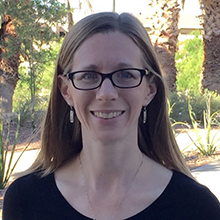DIRECTORS
Tim Collins

Co-Director, Center for Natural and Technological Hazards
Professor, Department of Geography
tim.collins@geog.utah.edu
Tim Collins is the Co-Director of the Center for Natural and Technological Hazards at the University of Utah, and a Professor in the Department of Geography and Environmental and Sustainability Studies program. He is a human geographer whose research is interdisciplinary, collaborative, and focused on social vulnerability to hazards/disasters, environmental justice, and health disparities. His research has relied on applying multiple methods (e.g., spatial analysis, statistics, survey research, as well as qualitative) to examine human dimensions of flooding, wildfire, air pollution, climate change, and other environmental phenomena. He has led research and student training projects funded by the National Science Foundation, National Institutes of Health, and Environmental Protection Agency, and he has served as Chair of the Hazards, Risks, and Disasters Specialty Group of the American Association of Geographers.
Sara Grineski

Co-Director, Center for Natural and Technological Hazards Professor, Department of
Sociology
sara.grineski@soc.utah.edu
Sara Grineski is a Professor in the Department of Sociology with a joint appointment in Environmental and Sustainability Studies and the co-Director of the Center for Natural and Technological Hazards at the University of Utah. Her doctoral education was funded by a five-year National Science Foundation (NSF) Integrative Graduate Education and Research Training (IGERT) fellowship in urban ecology at Arizona State University. Her research interests are in environmental health disparities, children’s health, environmental justice, and undergraduate research mentoring. Throughout her faculty career, Dr. Grineski has set as a top priority involving students in her research; over half of her publications involve student authors. Dr. Grineski has received external research funding as a PI or Co-PI from the NSF, the National Institute of Health (NIH) and US Environmental Protection Agency (EPA).
